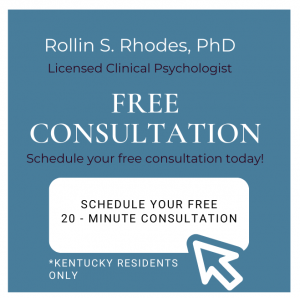TRAUMA

We’ve all heard the term “PTSD” Or Post-Traumatic Stress Disorder.
The news carries many stories about Soldiers returning from combat.
What isn’t so well-known is just how many people are affected by trauma, and how many causes there are. About 6 of every 10 men (or 60%) and 5 of every 10 women (or 50%) experience at least one trauma in their lives. Women are more likely to experience sexual assault and child sexual abuse. Men are more likely to experience accidents, physical assault, combat, disaster, or to witness death or injury . Not everyone who experiences trauma develops PTSD. In a given year, roughly 5% of women and 2% of men have current posttraumatic symptoms (National Center for PTSD).
A common experience in therapy is see a new patient with multiple symptoms of anxiety, depression, and a variety of other issues. A look at their present circumstances doesn’t account for how they’re feeling. A look at their history indicates good and bad events, just like all of us, but nothing remarkable. However, there can be cues.
One cue may be that they cannot account for periods of their life. An adult may remember everything up to 8 years old, and after 10 years old but not in between. Another cue can be an exaggerated reaction to something that most people are not as triggered by, such as a loud voice.
Sometimes, these individuals may report recurrent memories and dreams, flashbacks, intense distress at any cues, and avoidance of anything associated with the event. Memories, thoughts and feelings including sounds and aromas can be cues. These cues can cause reactions of hypervigilance and exaggerated startle response (DSM-V). The person may not be consciously aware of what they are reacting to.
One of the findings of the research is that trauma affects a specific part of the brain that in effect “records” the event and any cues associated with it including noises, aromas, or visual cues. This functions to cause us to avoid anything associated with danger in order to protect us. We have all heard about the “fight or flight” reaction. One problem is that this can operate long past the danger. An irony is that the conscious part of our brain may not be aware of the original source of these reactions. Some people may not even remember the event itself.
 A typical course of therapy would be to get a very thorough background. The next step is to get a solid sense of how each day typically goes. There may be memory gaps, and there may be exaggerated reactions. People are typically very tense, and learning good relaxation and breathing exercises can make a difference. They can then use those skills to begin to notice triggers that affect them, sometimes to the point of panic for no obvious reason. Often, the pattern of triggers begins to make sense.
A typical course of therapy would be to get a very thorough background. The next step is to get a solid sense of how each day typically goes. There may be memory gaps, and there may be exaggerated reactions. People are typically very tense, and learning good relaxation and breathing exercises can make a difference. They can then use those skills to begin to notice triggers that affect them, sometimes to the point of panic for no obvious reason. Often, the pattern of triggers begins to make sense.
These triggers can be any cue associated with prior trauma, such as noise; emotions that they learned to repress many years ago such as anger; or a visual cue, such as a closed fist or a dark room. The person then learns to desensitize themselves. They learn to deliberately place themselves in noisy environments while staying relaxed and making realistic coping statements. They sit relaxing in a dark room for longer and longer periods until it no longer causes anxiety. They learn to recognize, label, and constructively express emotions in a nonconfrontational manner, and then to let go.
Very rarely, some individuals begin to recall actual traumatic events. The part of their brain that recorded the event that was then dissociated from their awareness, begins to dissociate less. This can be scary. The irony is that the memories feel terrifying, while the reality is that they are not actually dangerous. That’s not the way it feels to the person. They may need more support from friends and family they trust. The good part is that the memories begin to affect them less and less. Typically, their reaction never goes away but becomes much less powerful.
This is not the only type of therapy, and there are other empirically-based approaches that research has indicated can be effective. Often, issues of clinical depression must also be addressed. In any case, this process requires a highly trained and experienced provider.
The good news is that there are often treatments that can make life far less stressful.
*Historically, theories come and go, and some have a certain shelf-life. The views presented here represent extensive replicated research with positive outcomes. However, a certain amount of skepticism is a good idea.


